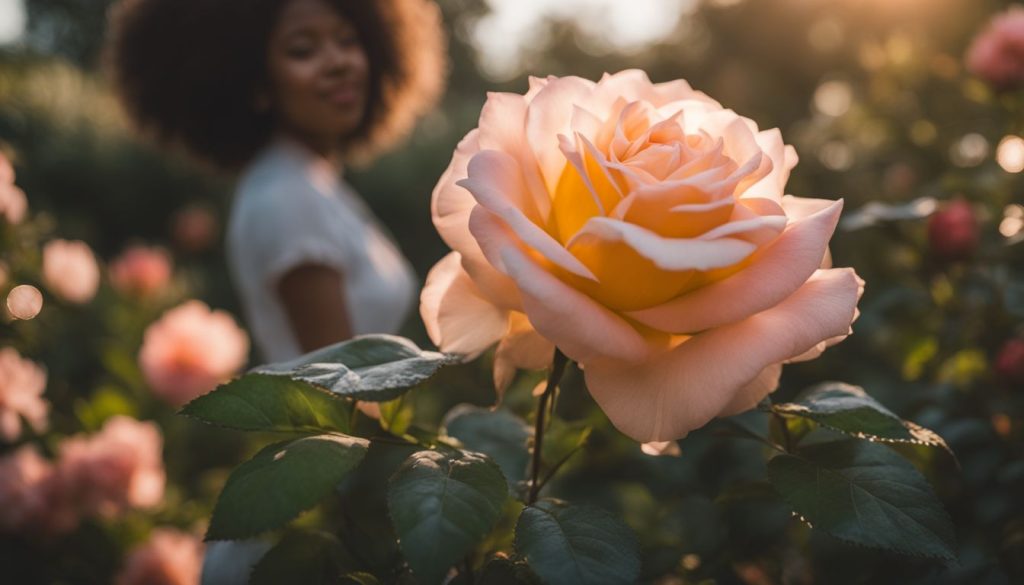How To Write A Poem For A Girl

Struggling to express your love in words? It’s a common challenge faced by amateur poets.
Did you know the first step in writing a love poem is thinking about your feelings for someone special?
This article will guide you through crafting a heartfelt expression of love, one line at a time. Get ready to make hearts flutter!
Key Takeaways
- Explore other love poems to get inspired. Look at how famous poets share their feelings and use different styles.
- Dive into your deepest emotions about her. Think of special moments, and why they matter, and express these in words that feel true to you.
- Start with small thoughts or moments you cherish. Write them down freely without worrying about making them perfect right away.
- Use literary devices like metaphors and similes to make your poem shine. They help create vivid pictures in the reader’s mind.
- Read your poem out loud after writing it. This helps catch any awkward spots and improves the flow of your words.
Table of Contents
Tips for Writing a Love Poem

Writing a love poem can seem daunting, but it’s all about channeling your deepest feelings. Dive into these tips and let your heart lead the way on paper.
1. Read other love poems for inspiration
Exploring the work of others can light up your creative path. Take the time to study the best love poems and examples of love you can find.
They will show you how poets express their feelings, use sensory descriptions, and play with poetic forms.
some poets to look at include Pablo Neruda, Nikki Giovanni, and Maya Angelou.
From Shakespeare’s sonnets to modern free verse, there’s a vast world of romantic expressions waiting to inspire you.
Take time to notice the little things that make these poems resonate with readers. How do they describe love? What literary devices stand out? Use these observations as a springboard for your writing.
Love poetry comes in many shapes—see which ones speak to you and think about how you can make them your own.
Drawing upon different forms could be something special for expressing how much you care.
2. Think about your feelings for the person/subject
Think about the girl and the special moments shared and why they mean so much to you. Write these feelings down as raw emotions or brief notes.
You’re not just writing a poem; you’re mapping the landscape of your heart for her to see.
Focus next on expressing those feelings in words that come straight from the heart. If love feels like a warm embrace, say so.
NOTE: Remember funny moments, tender touches, and shared dreams.
These are some of the golden threads you’ll weave into your love poetry. Let every word paint a picture of your affection, making it as vivid and real as the emotions themselves.
3. Start small
Don’t let the idea of writing a love poem overwhelm you. Start small to ease into it.
Think about a tiny moment or feeling you share with her—maybe how her smile lights up the room or the comfort of holding hands.
These moments can spark inspiration, making your poem feel more genuine and intimate.
Jot down your thoughts freely without worrying about rhyme or rhythm. This first draft is just for you, capturing raw emotions and details that matter most to both of you.
Then, gradually shape these notes into verses that express your feelings deeply and truly—a perfect foundation before moving on to editing later on.
4. Write first, edit later
Once you’ve defined your emotions and chosen a few favorite memories, it’s time to start writing your poem.
Let the words flow onto the paper without worrying about spelling or grammar mistakes.
This approach helps capture genuine feelings and ideas that make your love poem stand out. Remember, the first draft is just for you; no one else has to see it yet.
After pouring out your heart, take a break before coming back to edit.
This gap allows you to see your work with fresh eyes—making it easier to spot areas for improvement or refinement.
Revising might involve changing words, adding metaphors, or adjusting the rhyme scheme.
The goal is to polish while keeping the essence of what makes your poem personal and impactful alive.
5. Read your poem out loud
Reading your poem out loud is a game-changer. It lets you hear the rhythm and flow, making it easier to spot where the words might stumble or soar.
Think of each line rolling off your tongue, aimed straight at the heart of your special someone.
This practice helps ensure that what you’ve written conveys the emotion and passion you feel.
- Catch every nuance by listening to how your poem sounds in the air—where do you naturally pause?
- Which words resonate with more feeling?
- Use this feedback loop as a tool to refine and polish.
Expressing love through poetry becomes more vivid, touching directly on the experience of love shared with that particular person.
Trust your voice; it’s powerful enough to make every word count in expressing how much they mean to you.
Techniques for Crafting a Love Poem

Crafting the perfect love poem is like painting with words, each stroke filled with your deepest emotions.
Let’s take a more detailed look into the techniques that breathe life into your verses, transforming simple words into a heart-touching masterpiece.
Utilize literary devices
Literary devices like metaphor, simile, personification, and allegory can turn your love poem into a masterpiece.
- Each device has its charm. A metaphor could compare the intensity of your love to the sun’s fiery blaze without directly saying so.
- Similes let you say her smile is as bright as the stars, creating vivid imagery in just a few words. Personification might give the moon the power to wink at you both during a romantic moment, adding magic to your memories.
- Allegories allow for a deeper exploration of feelings and experiences through extended metaphors that weave throughout your poem. This technique can help readers connect with emotions on a profound level—making them feel part of an epic love story.
Adding these elements makes your poetry resonate more deeply, offering glimpses into your heart and soul expressed in uniquely captivating ways.
Use sensory descriptions
Sensory descriptions bring your love poem to life.
Imagine capturing the essence of your feelings with vivid imagery that appeals to the senses—smell, taste, touch, sound, and sight.
These elements are key in showing how deeply you feel rather than simply telling.
A whisper soft as silk or a gaze bright as the morning sun can transform words into an experience.
Incorporating unique experiences with sensory details makes your poem resonate more with readers.
It’s about infusing those special moments—the scent of her perfume during a slow dance or the warmth of her hand in yours under a starlit sky—into each line.
This technique allows others to tap into the emotions and connections shared, making your expression of love unforgettable and deeply personal.
Make it deeply personal
After exploring sensory descriptions to bring your poem to life, the next step is diving deep into what makes your love unique.
Pull from the essence of your relationship and focus on those moments only you two share.
Think about that favorite memory you both cherish or describe something special about your beloved that lights up your world.
This approach ensures every word reflects a piece of your shared journey.
Expressing ideas specific to your bond elevates the poem from just words to a heartfelt tribute.
Incorporate imagery and symbolism related to experiences or dreams you have together—transform these elements into poetic lines that capture the soul of your affection.
Writing from this deeply personal place turns a simple gesture into an extraordinary testament of love, making every phrase resonate with genuine feeling and intimacy.
Choose the form of your poem
Choosing the right form for your love poem sets the tone and rhythm for your heartfelt message.
Consider popular forms like sonnets, known for expressing love, or haikus for a shorter, more impactful approach.
Each form has its unique way of weaving words together—sonnets offer a classic touch with their 14-line structure and iambic pentameter, while haikus capture fleeting moments in just three lines.
Deciding on free-form poetry offers flexibility to shape your thoughts without traditional constraints, letting raw emotion guide your pen.
Whatever style resonates with you, ensure it aligns with the intimacy and depth of your feelings.
Exploring different poetic forms can inspire new ways to express those special moments shared with the person you’re writing about.
Acrostics can add a playful layer by spelling out her name with each line’s first letter, making the poem uniquely personal.
Or maybe opt for an epic ballad to narrate your love story across verses.
Your choice should reflect both your voice as a poet and the essence of your relationship—making it deeply meaningful to you both.
Now let’s move on to how you can infuse authenticity into every line.
Be yourself
Showing your true self in your love poem is crucial. Your words will shine brighter when they reflect who you truly are.
Think about moments or experiences with your loved one that only you two share. Use those to make your poem deeply personal and unique.
This approach ensures the poem comes straight from the heart, setting it apart from clichéd expressions of love.
Next, consider how to polish your love poem to perfection.
How to Polish Your Love Poem
Once you’ve poured your heart into writing a love poem, the next step is to polish it until it shines.
Carefully review each line, making sure every word adds beauty and depth to your declaration of love.
Proofread for grammar and spelling errors
Proofreading your love poem ensures that grammar and spelling errors don’t distract the reader from your heartfelt message.
Every word counts in a short poem, so minor tweaks can make a big difference.
Tools and resources are available to help you clean up those pesky mistakes, making your writing clearer.
Reading your poem out loud is another effective technique for catching errors you might miss on paper.
This practice can also improve the flow of your poem, making it more enjoyable for the person you’re writing for.
Love poetry benefits greatly from such careful editing, ensuring that the emotions you want to express shine through without any grammatical hitches getting in the way.
Make a note of these:
- Avoid cliches
- Avoiding cliches
- overused phrases
- fresh ways to express your feelings
Look for inspiration in your unique experiences with the girl you’re writing about.
This approach not only avoids the trap of sounding sappy but also makes your poem deeply personal and genuine.
Be yourself as you craft each line of your love poetry.
Your authentic voice will resonate more than any borrowed sentiment could.
Express what’s truly in your heart by drawing upon real emotions and moments you’ve shared with your loved one.
By steering clear of cliches, you create a space where original expressions of love flourish, making the poem an extra special gift for the object of your affection.
Incorporate heightened senses
Bringing your senses into the poem can make your words jump off the page.
Describe how her laughter sounds like music or how her presence feels like warmth on a cold day.
Use visuals to paint a picture; maybe compare her eyes to stars that guide you in the night.
These sensory descriptions help create vivid imagery, making your love poem resonate more deeply.
Concluding Thoughts on How To Write A Poem For A Girl
Writing a love poem for a girl is an uplifting journey. You delve into your deepest feelings and find words that sing of your affection.
It’s about being honest, choosing the right form, and adding personal touches that resonate.
Remember, the goal isn’t just to share feelings but to connect deeply with her heart through poetry.
The perfect expression of love becomes easier with each word written from the heart—making it not just a poem, but a bridge built from genuine emotions.
FAQs About How To Write A Poem For A Girl
1. What makes a good love poem?
A good love poem draws upon personal experiences, feelings, and moments shared. It’s authentic, avoiding clichés to express genuine emotions that resonate deeply.
2. How can I start writing a love poem for someone special?
Begin by reflecting on your feelings and experiences with the person. Think about what makes your heart race when you think of them—it’s these thoughts that will fuel your poem.
3. Are there specific tools or forms I should use to write my love poem?
While not mandatory, experimenting with different poetry forms can add structure to your expression. Whether it’s a sonnet for its romantic tradition or free verse for its flexibility, choose what best captures your emotions.
4. Should I aim to surprise her with the poem on a special occasion?
Yes! Surprising her with a heartfelt poem on a special occasion adds an element of thoughtfulness and shows how much you care.
5. How do I know if my love poem is good enough to share?
Read the poem out loud to yourself—you’ll hear the rhythm and flow of words. Feelings of nervousness are normal; just remember, it’s the sincerity that counts most.
6. What should I do after I’ve written my love poem?
Take some time away from it—when you revisit the poem later, fresh eyes might offer new perspectives or improvements before sharing it with her.
References:
- Haiku Poems About Nature. spot.colorado.edu/~downton/lifegardening/nature.htm.
- https://www.twinkl.com/teaching-wiki/free-verse-poetry#:~:text=Free%20verse%20is%20any%20form,the%20rhythm%20of%20natural%20speech.
- “Acrostic.” Merriam-Webster Dictionary, www.merriam-webster.com/dictionary/acrostic.


